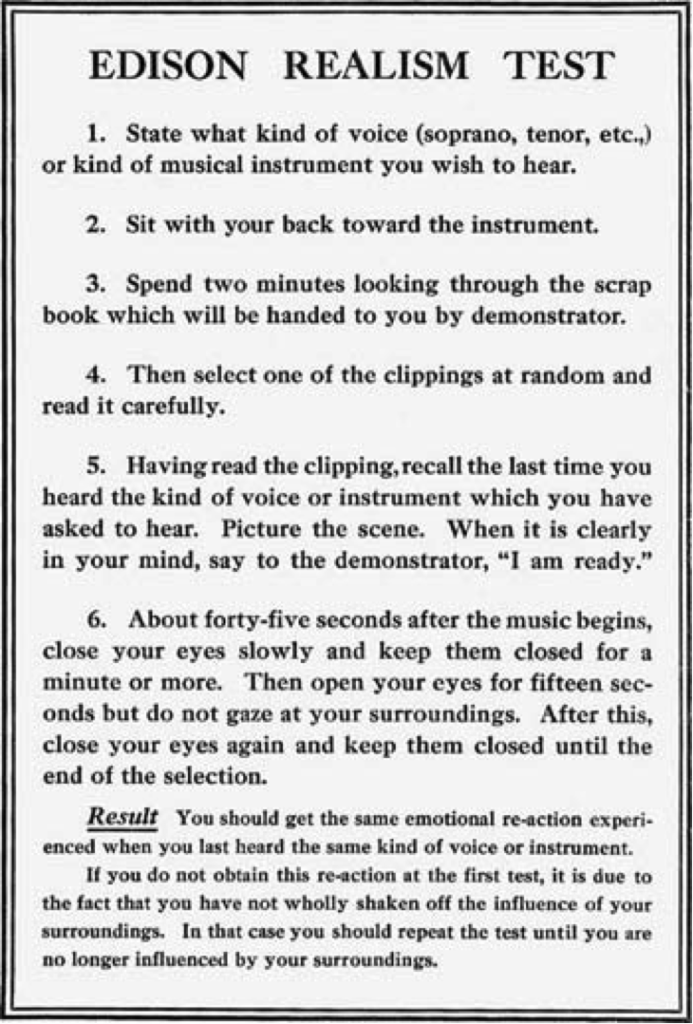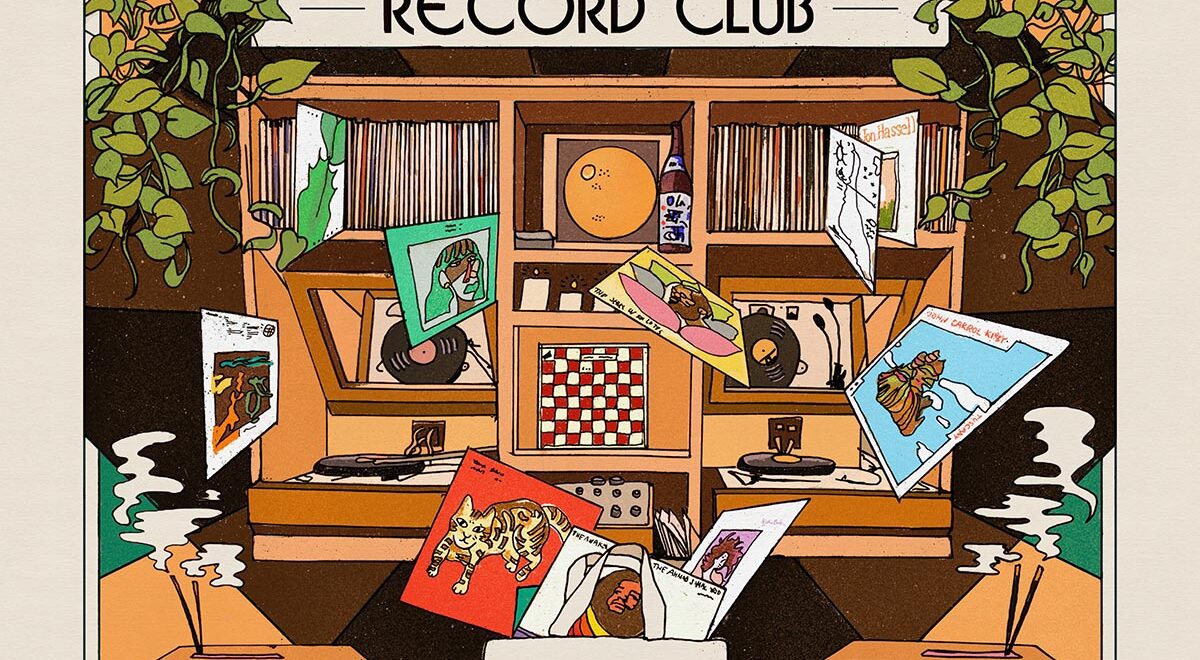Although major stories on it are frustratingly rare these days, the vibrancy and range of community-run internet radio collectives delivering human-selected music in human-selected combinations makes that region […]
The Edison Realism Test: Early Experiments in Capturing the Soul of Live Music in a Recording

Here is a fun throwback to 1920 – a newspaper advertisement for the new Edison Phonograph and its proclamation of “Supreme Realism.”
Like a magician showing the audience that a rabbit is truly inside the hat, the early days of the Edison Company were spent wow-ing music lovers with a hear-it-to-believe-it test proving that a phonograph could sound as real as a live performance. The Edison Company also wanted to demonstrate that state-of-the-art sound recording and reproduction could effectively capture, embody and retain the soul of the performance, preserving what was once ephemeral.
The ad – printed in the Gazette Times on August 15, 1920 – reads:
Certainly you’ll come and try Mr. Edison’s Realism Test. People all over the country are talking about Mr. Edison’s Realism Test. It has astonished them with a new insight into the New Edison’s marvelous Realism. Try this interesting test for yourself. The Realism test will help you to determine whether the New Edison causes you the same emotions as the voice of the living singer – the sound of an actual instrument – or the strains of an entire orchestra.
The slogan for The New Edison equipment was “the phonograph with a soul.”
You can view the actual newspaper ad here:
Another ad for the Edison Realism Test – printed in the Pacific Rural Press on May 25, 1920 – described Edison’s exercise as “a valuable scientific method of testing your capacity to enjoy music.”
The ad detailed renowned psychologists trying out the phonograph, unable to tell the difference between a live singer and a sound recording: “A voice floated to my ears from within. It was an exquisite voice… it had that appealing sort of beauty that reaches down inside you and makes you feel lumpy in your throat. I looked through the doors to see the singer. But I saw no singer at all – just three men seated with their backs toward a phonograph… finally one found his voice: ‘I could have sworn there was a living singer behind me…’”
Customers were invited to find an Edison dealer near them where they could take the test to experience the effect in person.
You can view the actual newspaper ad here:
It’s easy to take for granted the magic and complexity of recorded sound amplified in our own homes. Next time you pop on a record, remember doing it for the very first time, whether you were a small child or a teenager, and recall how mind-blowing and perplexing it was.
If you were already a jaded adult when you first used a record player, work to savor the bewilderment through the lens of a child’s eyes, sweetly naïve and unable to conceive of how sound could be locked up in these orbiting grooves, released as vibrational sound waves at any moment we please. Imagine yourself in 1920, blown away by the newest Edison phonograph. Better yet, attempt the Edison Realism test yourself.
Here is the actual Edison Realism Test as depicted in Mark Katz’s book “Capturing Sound: How Technology Has Changed Music”:













